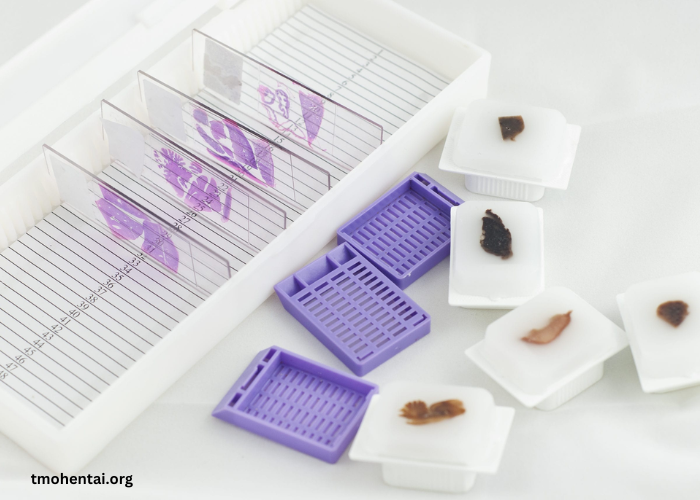In the realm of biomedical science, the ability to study human tissue is a foundational pillar in understanding diseases and developing treatments. Formalin-fixed paraffin-embedded (FFPE) tissue samples have revolutionized such studies, providing researchers and clinicians with a unique window into the past.
But what exactly can you achieve with FFPE samples, and how are they pivotal in advancing cutting-edge research? This post is an illuminating guide for pathologists, clinical scientists, and biomedical researchers looking to maximize the potential of this preservation method.
The History of FFPE Samples
Before we explore the current applications of FFPE samples, it’s crucial to understand the history behind this preservation method. Over a century ago, using formalin and paraffin to fix and embed tissue revolutionized pathology. It allowed for long-term storage of samples and made it possible to study diseases pre-dating the development of modern histological techniques. What might seem like a routine part of tissue processing today was, in fact, a significant breakthrough in science and medicine.
Application 1: Genomic and Proteomic Profiling
Unraveling the Genetic Blueprints of Disease
One of the primary assets of FFPE samples lies in preserving nucleic acids and proteins within the tissue’s architecture. Through platforms like next-generation sequencing (NGS) and mass spectrometry, researchers can analyze FFPE samples to understand the genetic and proteomic underpinnings of various diseases. This approach termed retrospective analysis, has opened doors to dissecting the molecular mechanisms of historical cases and provided insights that can drive precision medicine initiatives.
Overcoming Challenges in Nucleic Acid Isolation
Whilst FFPE samples offer a rich genetic material database, isolating high-quality nucleic acids from these samples can be challenging. The cross-linking effects of formalin can lead to fragmentation and chemical modifications, necessitating meticulous extraction protocols. This section dives into the specific techniques and advancements that have enabled researchers to overcome these hurdles and successfully extract intact DNA and RNA for downstream analysis.
The Promise of Proteomic Analysis in Clinicopathologic Correlation
FFPE’s role extends beyond genetics. Proteomic studies are becoming pivotal in correlating the expression patterns of proteins with clinical outcomes. Here, we highlight examples where FFPE samples have allowed for the retrospective analysis of protein profiles, paving the way for novel diagnostic and prognostic markers in various cancers and other diseases.
Application 2: Immunohistochemistry (IHC) and In Situ Hybridization (ISH)
Visualizing Molecular Targets in Tissue Context
Immunohistochemistry and in situ hybridization are essential techniques for visualizing specific antigens or nucleic acid sequences within tissue samples. Fundamentally, IHC and ISH help researchers understand the spatial distribution of molecular targets, which is often critical in clinical diagnosis and drug development.
Ensuring Effective Antigen Retrieval in IHC
For FFPE samples, antigen retrieval is crucial as it undoes the cross-linking and allows for the molecules to be recognized by antibodies. In this section, we discuss the various methods of antigen retrieval, from heat-induced epitope retrieval to enzymatic digestion, and their applications in different research contexts.
The Impact of Multiplex IHC and ISH on Spatial Analysis
The ability to visualize multiple targets simultaneously within a tissue section can significantly enhance our understanding of molecular interactions. Multiplex IHC and ISH are rapidly evolving, and researchers must be familiar with the latest techniques and tools to capitalize on these advances effectively.
Application 3: Longitudinal Studies and Biobanking
FFPE as a Bridge to the Past and a Beacon for the Future
FFPE samples are unique in their ability to store tissue for prolonged periods without compromising cellular morphologies’ integrity and molecular compositions’ integrity. This makes them invaluable for longitudinal studies, where researchers can analyze samples collected over time, tracking changes and disease progression.
Best Practices for Biobanking FFPE Tissue
Proper storage and documentation are critical for maintaining the quality and usability of FFPE samples in biobanks. In this section, we outline best practices for biobanking, including sample processing, storage conditions, and database management, to ensure the samples are well-preserved and readily accessible for future research.
FFPE in the Age of Precision Medicine
Precision medicine relies on comprehensive patient data, which often includes retrospective analysis of tissue samples. Here, we discuss how FFPE samples fuel the precision medicine engine, offering a wealth of historical data that can be correlated with modern outcomes to tailor treatments at an individual molecular level.
Navigating the Future of Research with FFPE
FFPE samples represent more than just a preservation technique; they embody a bridge between the past and the future of research. By leveraging the unique advantages of FFPE tissues, scientists can enhance our understanding of diseases, uncover new therapeutic targets, and revolutionize patient care. This post covers just a snapshot of the compelling research opportunities that FFPE samples offer. As technology advances and the scientific community continues to innovate, the potential applications of FFPE samples in biomedical research are limitless.
For researchers and pathologists, the message is clear: the careful curation and application of FFPE samples hold the key to unlocking a treasure trove of insights into the human condition. The stories they tell are instrumental in driving the next wave of breakthroughs in medicine, and it is through diligent research and application, we will continue to harness their power for the benefit of all.





